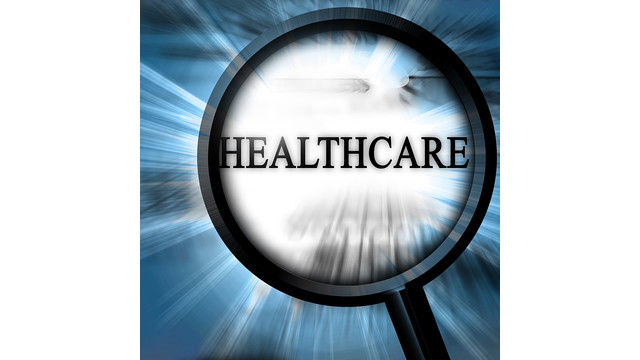Benefits
Health-Related Benefits Under the CARES Act
For services provided on or after Jan. 1, 2020, and for plan years beginning on or before Dec. 31, 2021, high-deductible healthcare plans (HDHPs) with HSAs provide coverage for telehealth or other remote care services without a deductible or having to ...
Aug. 12, 2020

The Coronavirus Aid, Relief and Economic Security (CARES) Act was signed into law on March 27, 2020, and provides broad economic relief to families (stimulus payments, expanded unemployment compensation, and other provisions) and small businesses (Paycheck Protection Program loans and payroll tax credits, among others) impacted by COVID-19. The following article discusses some of the health-related benefits under the CARES Act; review the benefits and share these with your clients.
Expansion of qualified medical expenses
Effective for amounts paid after Dec. 31, 2019, the definition of “qualified medical expenses” for purposes of various tax-advantaged accounts has been expanded. These include health savings accounts (HSAs), Archer medical savings accounts (MSAs), health flexible spending accounts (FSAs), and health reimbursement arrangements (HRAs). Qualified medical expenses now permanently include over-the-counter medications without a prescription, such as pain and allergy medication, and the cost of menstrual care products, including tampons, pads, liners, cups, sponges, or other similar products.
Taxpayers should save receipts from these purchases for their records and for submitting claims for reimbursements.
Safe harbor for telehealth services
For services provided on or after Jan. 1, 2020, and for plan years beginning on or before Dec. 31, 2021, high-deductible healthcare plans (HDHPs) with HSAs provide coverage for telehealth or other remote care services without a deductible or having to satisfy the plan’s minimum deductible. In addition, an otherwise eligible individual with coverage under an HDHP may still contribute to an HSA, despite receiving coverage for telehealth and other remote care services before satisfying the HDHP deductible, or despite receiving coverage for these services outside the HDHP.
This measure encourages the use of remote health services, helps ease the burden on in-person facilities, and ultimately limits the spread of the virus.
Increased flexibility in Sec. 125 cafeteria plans
According to IR-2020-95, the IRS has temporarily loosened the rules around Sec. 125 cafeteria plans because of unanticipated changes in expenses due to COVID-19. The claims period for taxpayers to apply any unused amounts remaining in an FSA or dependent care assistance program for expenses incurred has been extended through Dec. 31, 2020. Previously provided temporary relief for high-deductible health plans may be applied retroactively to Jan. 1, 2020. The limit on unused health FSA carryover amounts increased from $500 to $550, as adjusted for inflation.
COVID-19 testing
The Families First Coronavirus Response Act requires health insurers and group health plans to cover COVID-19 testing and related provider visits, and thus eliminates patient cost-sharing obligations under employer-sponsored group health plans. This measure encourages more people to get tested for COVID-19.
Background information
HSA: An HSA is a tax-exempt trust or custodial account set up with a qualified HSA trustee to pay or reimburse certain medical expenses incurred. Your clients may deduct contributions made to an HSA (with certain limits) even if they don’t itemize deductions on Form 1040, Schedule A, and contributions made by an employer (including contributions made through a cafeteria plan) may be excluded from income. Earnings on the assets accumulate in the account tax free, and distributions may be tax free if applied to qualified medical expenses. The HSA will stay with the taxpayer even if they change employers or leave the workforce.
FSAs: Health FSAs allow employees to use tax-free dollars to pay for medical expenses not covered by their health plans, such as premiums, deductibles, copayments, eyeglasses, and hearing aids. An employee needs to decide how much to contribute to the health FSA through payroll deductions before the plan year begins. The health FSA limit is $2,750 for 2020. The employee must spend any unspent amounts by the end of the plan year or forfeit the money. However, employers may allow employees more time through a carryover option (carryover up to $500 of unused amounts to the following plan year) or a grace period option (employee has until 2 ½ months after end of plan year to incur expenses).
Archer MSA: An Archer MSA is a tax-exempt trust or custodial account set up with a financial institution in which a taxpayer saves money that will be used for medical expenses incurred in the future. Plan holders are allowed to deduct contributions to these plans (with certain limits) even if they don’t itemize deductions on Schedule A. Interest or earnings will grow tax free in the account, and distributions may be tax free if used for qualified medical expenses. The account will stay with the taxpayer even if they change employers or leave the workforce.
HRA: An HRA must be funded solely by an employer, and contributions cannot be paid through a voluntary salary reduction agreement. Employees are reimbursed tax free for qualified medical expenses up to a maximum dollar amount, and there are no reporting requirements on the individual’s tax return. Any unused amounts in the HRA can be carried forward for reimbursements in later years.
Resource: Publication 969, Health Savings Accounts and Other Tax-Favored Health Plans
=========
Mike D’Avolio, CPA, JD, is tax law specialist and staff program manager at Intuit’s ProConnect Group. He is a customer and employee instructor, customer and government liaison, and a public relations representative.
